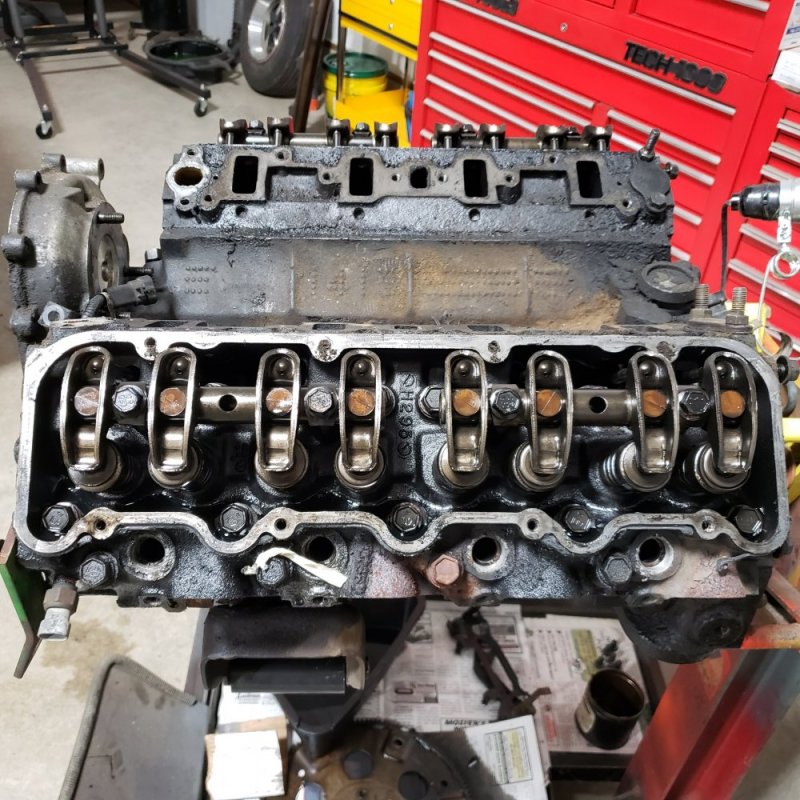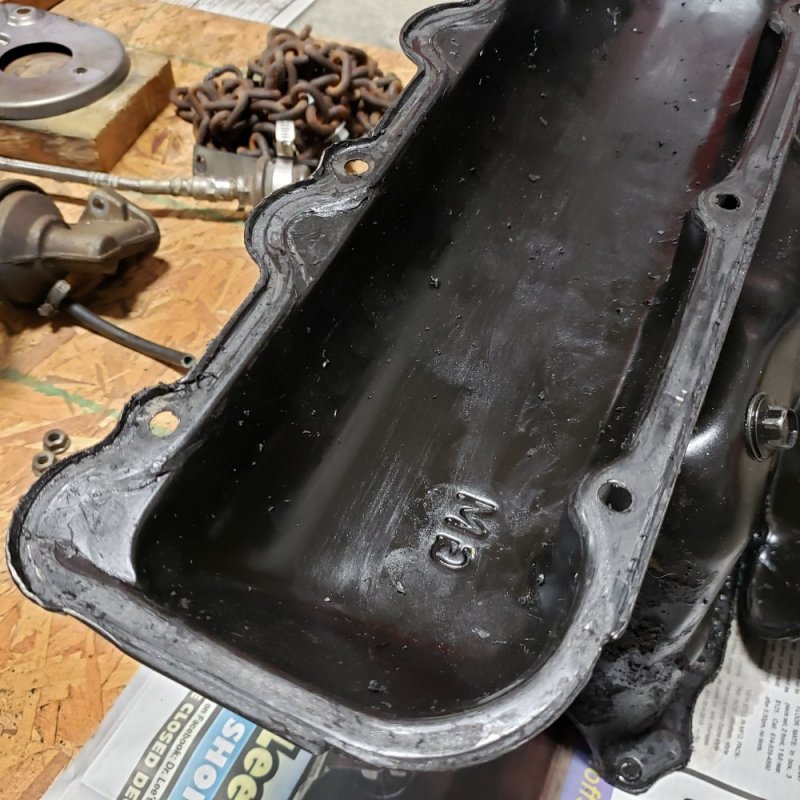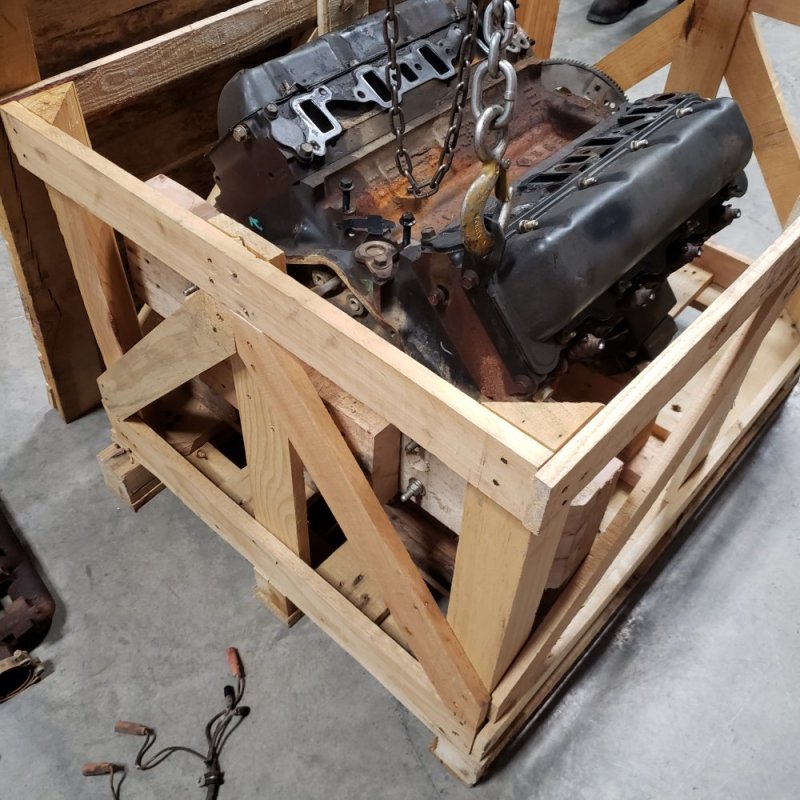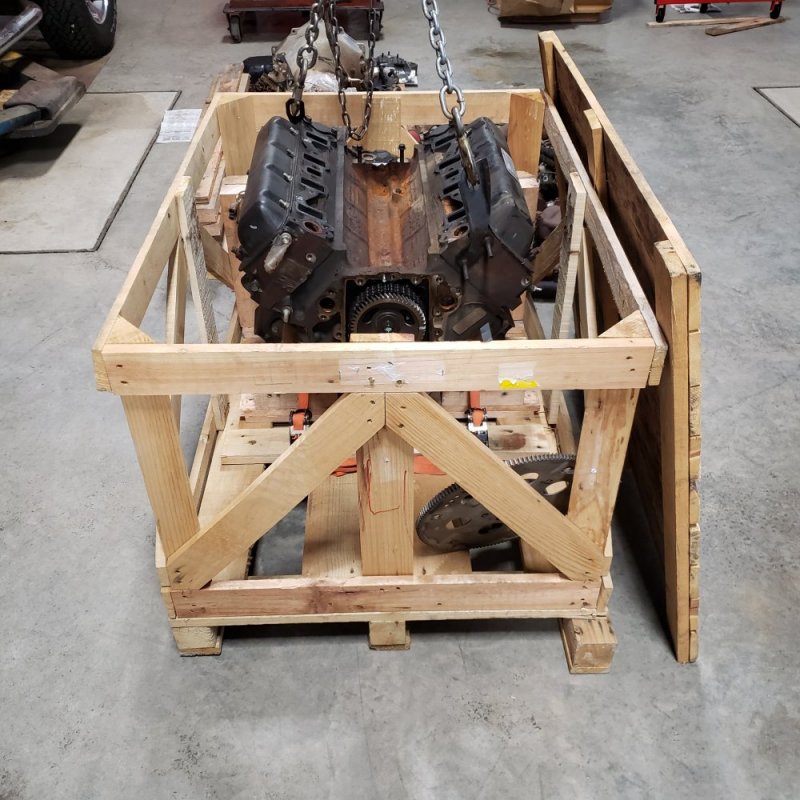Navigation
Install the app
How to install the app on iOS
Follow along with the video below to see how to install our site as a web app on your home screen.
Note: This feature may not be available in some browsers.
More options
-
Welcome to The Truck Stop! We see you haven't REGISTERED yet.
Your truck knowledge is missing!
- Registration is FREE , all we need is your birthday and email. (We don't share ANY data with ANYONE)
- We have tons of knowledge here for your diesel truck!
- Post your own topics and reply to existing threads to help others out!
- NO ADS! The site is fully functional and ad free!
Problems registering? Click here to contact us!
Already registered, but need a PASSWORD RESET? CLICK HERE TO RESET YOUR PASSWORD!
You are using an out of date browser. It may not display this or other websites correctly.
You should upgrade or use an alternative browser.
You should upgrade or use an alternative browser.
'95 Engine build
- Thread starter SnowDrift
- Start date
dieselolds
Well-Known Member
Nice job.Looks well secure
SnowDrift
Ultra Conservative. ULTRA!
Thanks to Twisted Steel Performance for the girdle and custom valve springs showing up yesterday. I'm no spring expert so I've relied on the recommendations of TSP for this. While I simply cannot absorb every recommended aspect for this engine, I will do what I can to piece together what I believe are some key features of a successful outcome for this engine.
I didn't doubt the quality would be there on the girdle when I first ordered, but once I was able to put my hands on it, I was pleased with what I saw. I had tossed around making my own, but concluded the R&D was already done with this one, so I wouldn't have to fool around fitting inside the oil pan and assuring flatness and accuracy = T-I-M-E. It is a nice part.
I didn't get photos, but I think everyone on here is familiar enough with the parts to know what I'm talking about.
I didn't doubt the quality would be there on the girdle when I first ordered, but once I was able to put my hands on it, I was pleased with what I saw. I had tossed around making my own, but concluded the R&D was already done with this one, so I wouldn't have to fool around fitting inside the oil pan and assuring flatness and accuracy = T-I-M-E. It is a nice part.
I didn't get photos, but I think everyone on here is familiar enough with the parts to know what I'm talking about.
As far as the spring deal goes, the stock spring has never changed, they are aspirated specs, now with turbos there is a lot of back pressure pushing on the back of the valves that makes a already weak spring worse, my customers deserved better so here we are ..
Will L.
Well-Known Member
Its really hilarious to think gm never altered the springs. That is so basic that I (and most everyone) would just expect they did. Gee I wonder why these valves float so bad— SMH
93detroit
Well-Known Member
Absolutely! But let's consider how GM intended this engine to be used- as a fuel efficient alternative to the 350. They decided to set this motor up as a low rpm, lugging slug. They just forgot that it was an ultra high compression, over square design. So the injection pump tuning (peak fuel at 1800rpm), tiny constantly spooled turbo, weak valve springs sufficient for low boost and rpm, were what the carpet walkers wanted.Hey, you know them Corporate Beancounters, @Will L. !
My personal experience is that these motors are much better at higher rpm. Give them fuel and let them breathe!!
Will L.
Well-Known Member
It was advertised from the beginning (6.2 na) as a high rpm light duty diesel.
Regardless, adding a turbo to any engine is going to raise the required spring tension
Regardless, adding a turbo to any engine is going to raise the required spring tension
93detroit
Well-Known Member
Yes, and the 6.5 is a more over square motor governed at 1k less rpm.
SnowDrift
Ultra Conservative. ULTRA!
Successfully removed the original valve covers off the boat anchor. Not a big deal to a lot of you guys that have done it, but it was a big win for me. I'm thankful I practiced on the donor engine so I didn't destroy these. They came off beautifully. Driver side took a long time and a lot of work. Passenger side seemed like it was barely stuck in place - I knocked the top loose and a little down one side, then it came off in my hands.




Paveltolz
Доверяй, но проверяй
Exactly the issue I was facing with my motor…weak springs further compounding the bad valve issues.As far as the spring deal goes, the stock spring has never changed, they are aspirated specs, now with turbos there is a lot of back pressure pushing on the back of the valves that makes a already weak spring worse, my customers deserved better so here we are ..
SnowDrift
Ultra Conservative. ULTRA!
Based on my limited knowledge of pushrod details, it sounds like it would be best to wait to order until the engine is coming together and the correct length can be determined with the 1.5 Ratio HS rockers. Does that sound correct?
I'm referring to this below. (Side note - gosh, those are thick wall!)

Compression ratio has been discussed from time to time and I didn't plan to have the pistons cut. I've read about thicker gaskets to lower compression. What head gaskets should I plan to use with this and how do I determine which is best?
I'm referring to this below. (Side note - gosh, those are thick wall!)

Compression ratio has been discussed from time to time and I didn't plan to have the pistons cut. I've read about thicker gaskets to lower compression. What head gaskets should I plan to use with this and how do I determine which is best?
A .010" thicker will net just under 1 point. You will get some for and against lower vs higher compression, so it depends on who you choose to listen to.
As for pushrods, stronger is better.
Pushrod length, if the block and heads haven't been shaved then stock length would be a good guess, but knowing for sure will require measuring, I recommend holding off and use a length checker to know for sure.
SnowDrift
Ultra Conservative. ULTRA!
Copy that.Pushrod length, if the block and heads haven't been shaved then stock length would be a good guess, but knowing for sure will require measuring, I recommend holding off and use a length checker to know for sure.
I'm not debating. Technically speaking 2 oz. of column load causes more deflection than 1 oz. of column load, so I get it. I was just commenting that +1/8" wall thickness is thick in comparison to others I have seen.As for pushrods, stronger is better.
I'm open to comments, which is why I posted on the open forum.A .010" thicker will net just under 1 point. You will get some for and against lower vs higher compression, so it depends on who you choose to listen to.
I have a cylinder pressure calculator I'll email you and you can play with the numbers and see the amount of change in cylinder pressure. Folks are overly concerned about starting a low compression engine, but how much of the total running time is starting vs running, very very little in my case. If a person wants a clean exhaust instantly they should get a different engine.
93detroit
Well-Known Member
If I were building a 6.5 to work hard every day (dually w/loaded gooseneck), it would be 18:1, not 20:1.
Will L.
Well-Known Member
My name is Will, and I am a recovering high compression addict.
I have lived in the “pro-high compression” side most my life. As the engine wears, compression lowers and eventually you have to rebuild to get it to run better, or sometimes at all.
Higher compression means more power across the entire rpm range, better burn of fuel across the entire range.
However, at some point we stopped using rocks and leaves to wipe our selves with and became civilized through better technology and information.
Once you get over 200,000 miles on the engine- the argument of easier starting still stands. But up to that point- making the turbo do the work instead of beating the engine to death has proven to be longer life, better power and better mpg. Hence the lowered ratio in ALL new diesels worth owning.
Options for later high mileage harder starts:
Magic fix in a bottle to help some of the lost compression due to cylinder & ring wear that is actually proven- “Restore” additive.
Powermaster starter. Larger battery cables to feed that starter. Maybe I am missing options?
Finally- what it you get to 250,000 miles and that 18.5:1 has trickled off and it just won’t start reliably any more? The engine is in far better condition for new rings because of the easier life the block had. So ya might have to pop the pistons out for a wuick hone and new rings. But it sure will have a better chance than running 21.5:1 the entire time.
There are other things you can do to lower compression ratio. Unshrouding the valves will remove material that improves air flow in and out of the cylinder. Doing it properly is the key to not creating problems. Chris showed pics of his as a great example. Many people (most) do that by hand not a cnc. You can have softer transitions than his and remove a hair more material than he did. Again- argued which way is better. If I was rich- mine would be exactly like his are.
Some people dish the valves. Nope! Not unless you have seriously upgraded valves.
More than the 10 over gaskets, some folks like the mls gaskets and they can get thicker yet. Some folks swear by them, I never had luck on long life engines with them. They belong on the racetrack imo.
I have lived in the “pro-high compression” side most my life. As the engine wears, compression lowers and eventually you have to rebuild to get it to run better, or sometimes at all.
Higher compression means more power across the entire rpm range, better burn of fuel across the entire range.
However, at some point we stopped using rocks and leaves to wipe our selves with and became civilized through better technology and information.
Once you get over 200,000 miles on the engine- the argument of easier starting still stands. But up to that point- making the turbo do the work instead of beating the engine to death has proven to be longer life, better power and better mpg. Hence the lowered ratio in ALL new diesels worth owning.
Options for later high mileage harder starts:
Magic fix in a bottle to help some of the lost compression due to cylinder & ring wear that is actually proven- “Restore” additive.
Powermaster starter. Larger battery cables to feed that starter. Maybe I am missing options?
Finally- what it you get to 250,000 miles and that 18.5:1 has trickled off and it just won’t start reliably any more? The engine is in far better condition for new rings because of the easier life the block had. So ya might have to pop the pistons out for a wuick hone and new rings. But it sure will have a better chance than running 21.5:1 the entire time.
There are other things you can do to lower compression ratio. Unshrouding the valves will remove material that improves air flow in and out of the cylinder. Doing it properly is the key to not creating problems. Chris showed pics of his as a great example. Many people (most) do that by hand not a cnc. You can have softer transitions than his and remove a hair more material than he did. Again- argued which way is better. If I was rich- mine would be exactly like his are.
Some people dish the valves. Nope! Not unless you have seriously upgraded valves.
More than the 10 over gaskets, some folks like the mls gaskets and they can get thicker yet. Some folks swear by them, I never had luck on long life engines with them. They belong on the racetrack imo.
Will L.
Well-Known Member
Why not on a put around truck?If I were building a 6.5 to work hard every day (dually w/loaded gooseneck), it would be 18:1, not 20:1.


